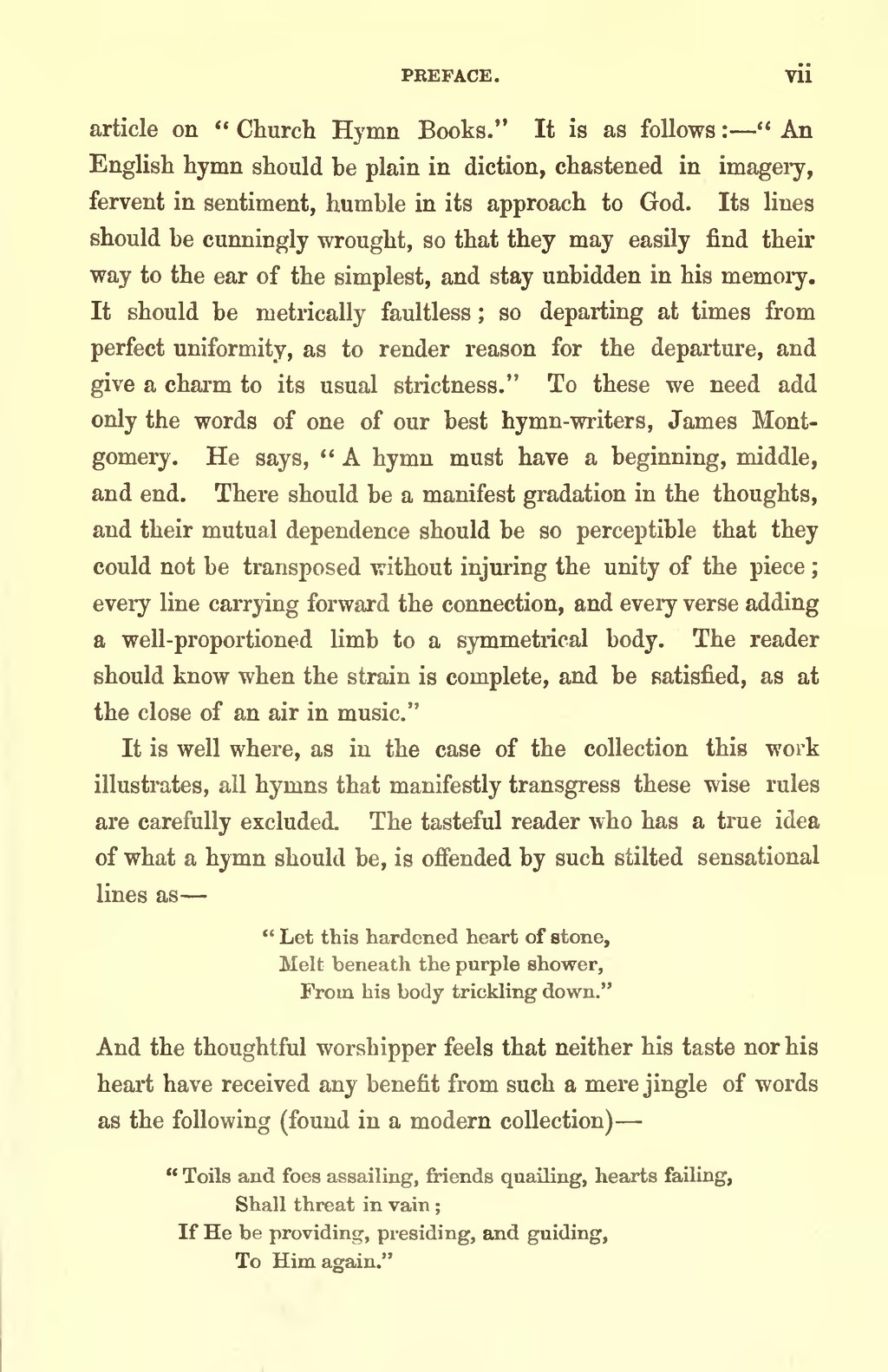article on "Church Hymn Books." It is as follows: "An English hymn should be plain in diction, chastened in imagery, fervent in sentiment, humble in its approach to God. Its lines should be cunningly wrought, so that they may easily find their way to the ear of the simplest, and stay unbidden in his memory. It should be metrically faultless; so departing at times from perfect uniformity, as to render reason for the departure, and give a charm to its usual strictness." To these we need add only the words of one of our best hymn-writers, James Montgomery. He says, " A hymn must have a beginning, middle, and end. There should be a manifest gradation in the thoughts, and their mutual dependence should be so perceptible that they could not be transposed without injuring the unity of the piece; every line carrying forward the connection, and every verse adding a well-proportioned limb to a symmetrical body. The reader should know when the strain is complete, and be satisfied, as at the close of an air in music."
It is well where, as in the case of the collection this work illustrates, all hymns that manifestly transgress these wise rules are carefully excluded. The tasteful reader who has a true idea of what a hymn should be, is offended by such stilted sensational lines as
- " Let this hardened heart of stone,
- Melt beneath the purple shower,
- From his body trickling down."
And the thoughtful worshipper feels that neither his taste nor his heart have received any benefit from such a mere jingle of words as the following (found in a modern collection)—
- " Toils and foes assailing, friends quailing, hearts failing,
- Shall threat in vain;
- If He be providing, presiding, and guiding,
- To Him again."
